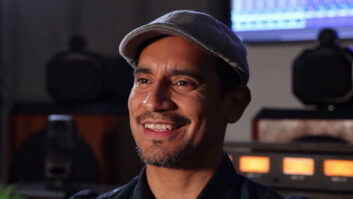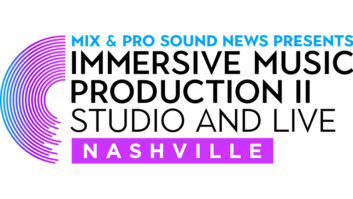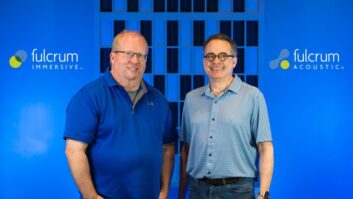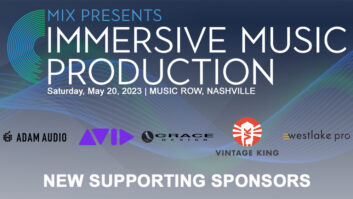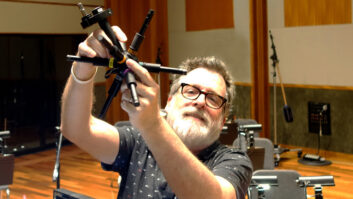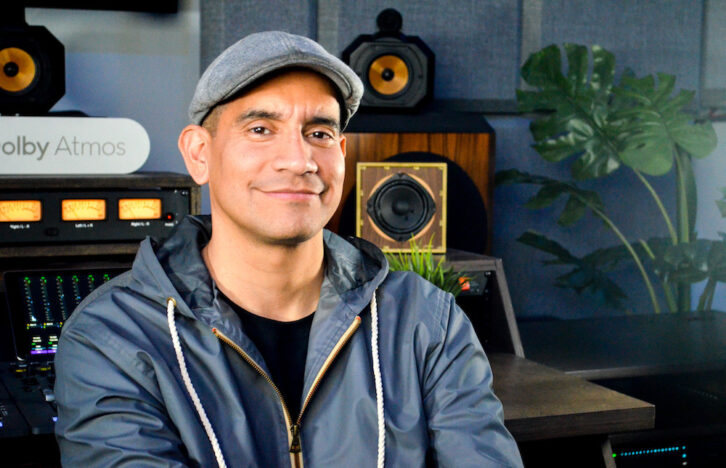
“I just got back from a couple of days at Yosemite with the family,” says Alex Solano, soon after picking up the phone in mid-July. “I’ve lived in California my entire life, yet had never been. It’s just gorgeous, absolutely beautiful. One day we rented bikes, and we went to an area where there was a small pond-slash-lake, and the water there was like 40 degrees—it comes right down from the mountains. I was out there on a small rock and I knew I had to go in at least one time. So I jumped. I had to do it.”
A few days off, enjoying nature with his wife and three children, must have felt like a few weeks to Solano, who for the past two years has been very busy.
In 2023 alone, Solano has rebuilt his studio, signed an exclusive mixing deal with an African label, launched a tier-based online curriculum/ consultancy called Mix With Confidence, produced a series of educational videos in Spanish for a major audio manufacturer, created an expansive YouTube tutorial channel, and traveled to Dubai to conduct
high-end audio seminars, among a hundred other projects, not to mention his daily life as a music producer and engineer.
To an outsider, all of this might seem a bit scattered, the piecing together of a post-pandemic pro-audio life. Nothing could be further from the truth. For Solano, a near-20-year industry veteran and lifelong independent engineer, the past two years have brought focus and cohesion to his dual interests in audio engineering and education, to the point that he launched a company, AlexProMix, to give it a name. And it’s all because of the emergence of immersive music, particularly Dolby Atmos.
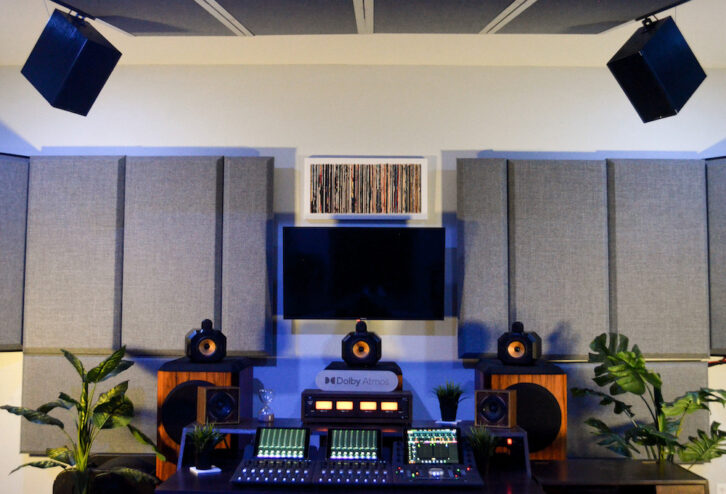
THE IMMERSIVE STUDIO
“The lightbulb moment for me was in late 2021, when Apple announced that they were going to support Dolby Atmos as a format for publishing and streaming music,” Solano says, “but it really goes back way before that. While I was in grad school studying music technology in the early 2000s, I attended a two-week summer program in Cal State Fresno with Bruce Swedien. I learned so much, but mostly he taught me early on that it wasn’t about the technology; it was about the musicality of the mix.
“So when Dolby introduced Atmos Music, and then Apple announced Spatial, I thought back to Bruce, in that he was a pioneer of music technology in the late-’50s, during the switch from mono to stereo,” he adds. “I realized, ‘Hey, this is that change right now. And I can be a part of it.’”
First things first: He needed a new 7.1.4 studio, one that was acoustically true and properly tuned, one that pushed air. If he was going all-in, he decided, he did not want to begin on headphones. He scoured YouTube, audio forums and every online tutorial he could find, whether from an individual engineer or from Dolby. He called former colleagues from his years at Avid and friends from Dolby. Then he started selling the gear from his rather well-appointed, longtime stereo studio and began converting the backyard casita of his home, about 90 miles east of Los Angeles, into a Dolby Atmos mix room.
“I went with an Avid MTRX for the interface because it does the room EQ and time alignment, and I decided to go Dante,” he explains. “I have three networks in my room. I have a Dante network for all the audio, I have the Avid S1 and Pro Tools network, and then a third network for my Eventide H 9000 and the LEA Connect amps.”
Solano chose a B&W monitor system that includes 801 Series 1 Tower speakers for left, center and right, with B&W 685 S2 speakers on the sides, rears and in the overheads. A pair of Genelec 7070A subwoofers handle bass management and the LFE send. The room was tuned by an engineer friend from Dolby, Bryan Pennington.
“We had just moved into this house in 2020, and for the switch to Atmos, I found out right away that I needed some new speakers, something big enough to fill the room,” he says. “I got on Facebook Marketplace and I found an older audiophile guy who had these two pristine B&W Series 801s. I went down there to check them out. I plugged them in to his McIntosh amp, and I was just blown away. It was like I didn’t hear the speakers—and that’s something that Bruce used to say: Listen to the music, not the speakers. When I heard these, I was like, ‘Wow, I don’t even know where the speakers are.’”
Today, Solano has more than 100 Atmos mixes to his credit, he’s a certified mixer with Universal Music Group and Warner Group, has immersive credits with record labels such as Atlantic Records, Photo Finish and CINQ Music, and in March, he signed a deal with Africa-based music distributor and publisher M.A.D Solutions as the company’s exclusive Dolby Atmos mixer.
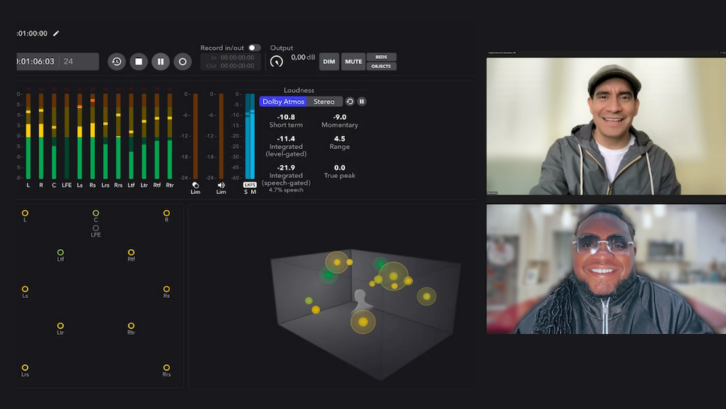
THE IMMERSIVE EDUCATION
While putting together his studio and becoming consumed in his DIY research into all things immersive, Solano realized that although there was plenty of information available, much of it seemed random, overly theoretical and often conflicting, or sometimes downright false. Nothing online seemed to bring together the pragmatic and practical aspects of mixing immersive music—things working engineers needed to know. He had the right background, he figured, and at heart considered himself an educator. Maybe he could fill the need.
“I started off my music technology career in 2005 working for Avid and Digidesign, so that kind of put me in the right place at the right time,” Solano explains. “I met so many engineers and got to go to all these different studios. I was always around the world of production and engineering. Eventually I became a Pro Tools product specialist, which meant I would get on stage and give product demos.
“Then, because I was a product specialist, I would get NFR software from different companies,” he continues. “I would go on YouTube, and I would type in ‘how to use this compressor.’ The videos at the time were horrible. It was usually some guy running a drum loop and twisting knobs, and I thought, ‘Wow, this gives me no context on how to use this.’ I started to create my own videos that showed how to use these tools in the context of creating a song. That has always been my baseline philosophy of education: I’m going to show you how to use this tool in the context of doing this. It’s very practical and hands-on.”
AlexProMix, M.A.D Solutions Sign Deal for Dolby Atmos
It’s not easy to break down complex technologies and explain processes—or even talk about music—in a way that most people can easily understand. Solano is a natural at it, full of personality and direct in his approach. Over the past decade, he has made dozens and dozens of videos, sometimes for other manufacturers and sometimes just because he wanted to, for his own YouTube channel, with many of them also now available at Mix With Confidence.
“Starting my YouTube channel was never for the extra income or selling stuff,” he notes. “It’s always just been a vehicle to open doors to other countries. I got invited to India to teach. I started traveling to South America in 2017 and discovered there was no video content in their native language; I saw a big need for the 15-year-old kid in Colombia who doesn’t understand English but has access to all the media in the world online. I realized I could solve that.
“I grew up in a generation where young people make music on computers and headphones. They publish it on SoundCloud, they watch YouTube videos and they try to mimic what every engineer does—but it doesn’t work out,” he adds. “They have all this software on their computer, but they don’t know how to use it to make a song. It’s not a matter of accessing technology or media. Anyone can do that. The missing element is, ‘How do I use these tools to make my music sound great?”


